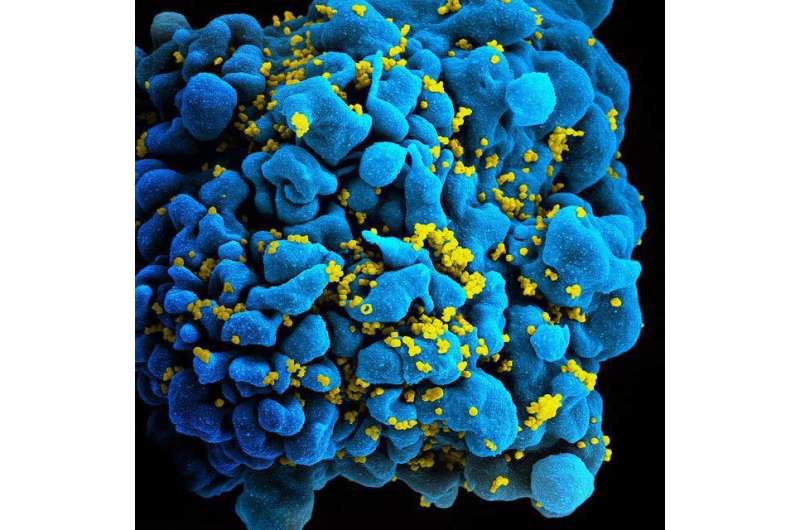Scientists analyze the dynamics of HIV adaptation

HIV mutates rapidly and forms countless virus variants in the patient. A collaboration of scientists from the group of Richard Neher, Max Planck Institute for Developmental Biology in Tübingen, Germany, and scientists from Stockholm analyzed the evolution of HIV using patient samples from early to chronic infection.
To characterize the evolution and adaptation of HIV variants, the researchers analyzed the viral RNA from samples of HIV-infected patients for several years, using cutting-edge sequencing methods. The scientists could show that the development of virus variants in each individual follows reproducible patterns. Certain regions of the virus accumulate mutations much faster than others: regions in the DNA that contain important functions for the virus reproduction vary less and almost all viruses from one sample have the same sequence at such sites. At other sites of the genome, where mutations are not as detrimental for the virus, variation increases steadily and for a large fraction of these sites alternative variations circulate in the virus population. This diversity allows the viral population to adapt rapidly.
The viruses change at up to one percent of genome positions per year – this corresponds to the difference between human and chimpanzee. The frequent mutations help the virus to hide from the immune system – at the expense of the viral functionality. The scientists calculated the globally most frequent state for every site in the HIV genome. They compared this global consensus sequence with the sequences from the patient samples. Surprisingly, 30 percent of all variations were reversions towards the consensus sequence. "One of our principal observations was that the virus has a kind of favourite sequence. The immune system pushes the virus away from this sequence. When the pressure of the immune system ceases, the viruses go back to this sequence", explains Neher. This happens for example when the virus is transmitted to another person, whose immune system recognizes other parts of the virus.
The results could also help to find vaccines against HIV: "Although HIV exists in many different strains, we found that the weak points of the virus are often the same in completely unrelated infections. One should now focus on these common weak points to develop vaccines", says Fabio Zanini, first author of the study
The development of HIV in the patients is also a good model to analyze general dynamics of evolution. In the case of HIV, the scientists can observe evolution directly from year to year and study processes that would take millions of years in other organisms.
More information: Fabio Zanini et al. Population genomics of intrapatient HIV-1 evolution, eLife (2015). DOI: 10.7554/eLife.11282



















